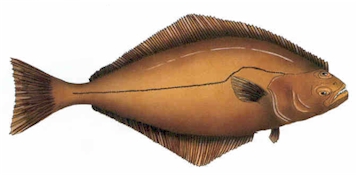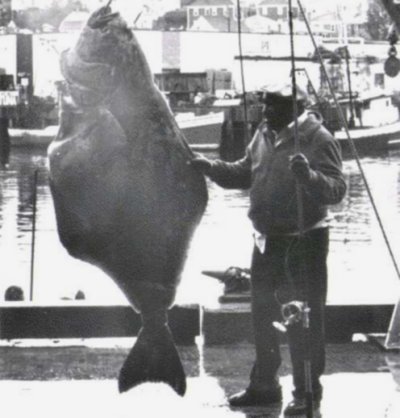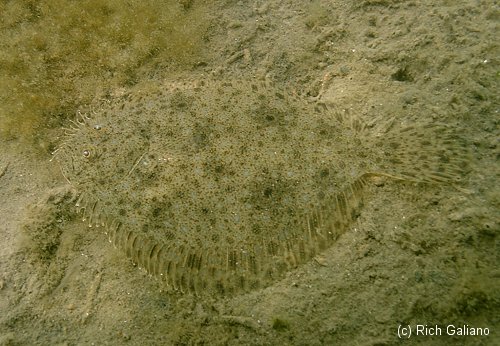Atlantic Halibut

Hippoglossus hippoglossus
( literally: "horse tongue" )
Size:
to 8 ft and 700 lbs.
usually much smaller
Description:
The Atlantic Halibut is the largest member of the flatfish family and has a grayish eyed side and white blind side. Juveniles are found along the coast of Norway and in relatively shallow waters, while full-grown halibut usually stay in deep waters, between 300 and 2000 meters. So don't expect to see one of these enormous flounders while diving.
Habitat:
Atlantic Halibut spawn at depths of 300-700 meters, in deep hollows in the banks off the coast and in the fjords. In addition to the coast of Norway, halibut also spawn off the Faeroe Islands, along the ridge between Greenland, Iceland, and Scotland, in the Denmark Strait, in the Davis Strait, and on the banks off Newfoundland.

"World Record" Atlantic Halibut - 255 lbs, caught in 1989, location unknown. This fish must be over seven feet long!
Excessive commercial fishing has reduced Atlantic Halibut stocks to the point where they are now a by-catch fishery - no longer worth going after themselves. Surprisingly, Halibut are now successfully farmed in Norway.



